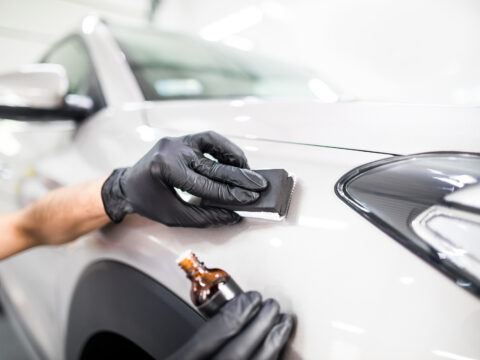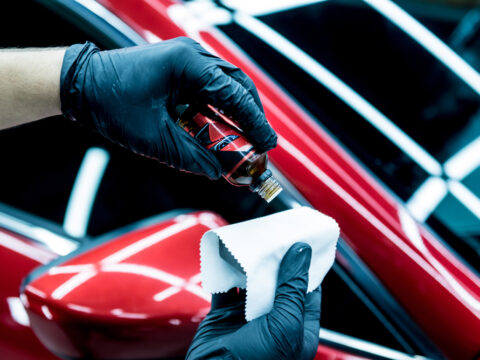Repairing auto body damage is a common necessity for vehicle owners, whether due to collisions, scratches or dents. However, the process of repairing such damage can sometimes lead to additional issues if not approached with care. This article explores effective strategies for preventing auto body damage during repairs, guaranteeing the vehicle emerges from the repair process in optimal condition.
Contents
Understanding the Repair Process
Before assessing prevention strategies, it is essential to grasp the typical steps involved in auto body repairs. The process generally includes assessing the damage, preparing the surface, applying body filler or performing panel replacement, priming, painting and finishing with clear coat application and polishing. Each of these steps demands precision and attention to detail to prevent inadvertent damage.
Selecting a Reputable Repair Facility
Choosing a reputable repair facility is the first step in preventing auto body damage during repairs; for example, researching and selecting an auto body shop in Texas with certified technicians and a track record of quality workmanship minimizes the risk of errors and confirms vehicles are in capable hands in The Lone Star State. Establishing clear communication with the repair facility fosters trust and transparency throughout the repair process.
Thorough Damage Assessment
A thorough assessment of the damage is crucial to identify all affected areas accurately. Even minor dents or scratches can have underlying structural implications that, if overlooked, may lead to complications later on. Utilizing advanced diagnostic tools and techniques uncovers hidden damage, allowing for comprehensive repairs. Moreover, engaging in open dialogue with repair technicians facilitates a comprehensive understanding of the damage extent and necessary repair procedures.
Protective Measures During Disassembly
Disassembly is a critical phase of the repair process, during which various components of the vehicle are removed to access the damaged areas. Employing protective measures such as masking tape, plastic covers and protective films shields adjacent panels and components from accidental scratches or damage during disassembly. Communicating preferences for protective measures with the repair technicians confirms the vehicle is safeguarded throughout the repair process.
Precision in Panel Replacement
In cases where panel replacement is necessary, precision is paramount to confirm proper alignment and fitment. Meticulous attention to detail during installation prevents misalignments and gaps, maintaining the structural integrity and aesthetic appeal of the vehicle. In addition, collaborating closely with repair technicians during panel replacement provides meticulous craftsmanship and seamless integration with the existing bodywork.
Careful Surface Preparation
Surface preparation sets the foundation for a flawless paint finish; thoroughly cleaning and sanding the damaged area removes contaminants and creates a smooth surface for primer adhesion. Any imperfections or contaminants left unaddressed can compromise the quality of the paint job and result in unsightly blemishes. Moreover, providing input on surface preparation techniques guarantees meticulous attention to detail and a flawless paint finish.
Skillful Paint Application
Paint application requires skill and expertise to achieve a seamless blend with the surrounding panels. Proper mixing, spraying technique and color matching are essential for achieving a uniform finish. Additionally, controlling environmental factors such as temperature and humidity minimizes the risk of defects like runs, sags or orange peel texture. Collaborating with repair technicians to select the appropriate paint materials and application techniques confirms a flawless paint finish.
Cautious Handling During Assembly
During reassembly, exercising caution is crucial to prevent accidental damage to freshly painted surfaces or adjacent components. Gentle handling, proper alignment and secure fastening techniques guarantee the repaired areas remain pristine and free from scratches or dents. In addition, communicating expectations for careful handling during assembly reinforces the importance of attention to detail and meticulous craftsmanship.
Quality Assurance and Inspection
Quality assurance measures—including thorough inspections at each stage of the repair process—help identify and rectify any discrepancies promptly. A final inspection confirms all repairs meet the highest standards of quality and craftsmanship before the vehicle is returned to the owner. Engaging in regular communication with the repair facility regarding quality assurance measures reinforces the commitment to delivering exceptional repair results.
Customer Education and Maintenance Tips
Educating customers on proper maintenance practices post-repair is essential for preserving the integrity of the repairs. Providing guidance on washing, waxing and avoiding abrasive cleaners or harsh environmental conditions prolongs the longevity of the paint finish and prevents premature deterioration. Engaging in a dialogue with repair technicians about post-repair maintenance practices ensures the effective preservation of repair quality and maximizes the lifespan of the vehicle exterior.
Conclusion
Preventing auto body damage during repairs demands expertise, attention to detail and adherence to best practices. By selecting a reputable repair facility, conducting thorough damage assessments, employing protective measures, and executing each step of the repair process with precision, vehicle owners ensure their vehicles emerge from repairs in pristine condition. Ultimately, prioritizing quality craftsmanship and meticulous attention to detail is paramount in safeguarding the integrity and value of a vehicle.














